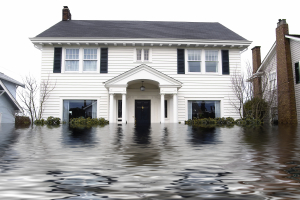Flood Damage and Your Health

When a natural disaster causes flood damage to your home, one of the biggest health risks you may end up dealing with afterward is mold. Mold spores are microscopic, and they’re everywhere in the air we breathe. Fortunately, mold growth in the home is usually restricted to perishable food items like overripe fruit. When flood damage causes building material like wood and drywall to become moist, however, these materials can become suitable habitats for various types of mold. After a flood, you’ll want to keep an eye out for mold growth, because it can actually present a significant health hazard.
Mold and Your Health
The health effects of mold usually involve respiratory problems. In many cases, this results from an allergic reaction to high levels of mold spores in the air. Some common symptoms of mold exposure often include:
- Nasal congestion
- Sinus congestion
- Coughing
- Difficulty breathing
- Wheezing
- Skin irritation
- Eye irritation
- Sore throat
These cold-like symptoms are annoying but benign for most healthy adults, but they can be especially dangerous for children and the elderly. Persistent cold-like symptoms from mold spores can also cause secondary infections to occur, including sinus infections and bronchitis.
Those most at risk from serious complications due to mold reactions are people who have asthma, as well as those who are immunocompromised from chemotherapy, disease, or other causes. Although most molds cause health problems due to allergic reactions, some molds actually emit poisonous compounds called “mycotoxins.” These include the infamous “black molds.”
Other Health Risks from Flood Damage
Along with creating a suitable habitat for potentially dangerous molds to grow, water damage from rain and flooding can also lead to other health concerns. Standing water is especially problematic. It becomes a fertile breeding ground for all kinds of microorganisms, many of which can cause disease. In addition to the bacteria and viruses that can thrive, water and water damage can also encourage larger organisms like dust mites and cockroaches to take up residence in your home. These organisms can trigger allergic reactions, which most commonly occur in response to their droppings and detritus.
When you’ve suffered from flood damage after a major disaster, it’s important to get damage assessment and storm damage repairs from trusted professionals. Not only is it important to repair your home, but it will also help keep you and your family safe. Disaster Response Group are Omaha’s leaders in repairing damage from rainwater, flooding, hail, wind, and other effects of a major storm. If you have storm damage, call today to find out more about flood damage repairs and other services.





